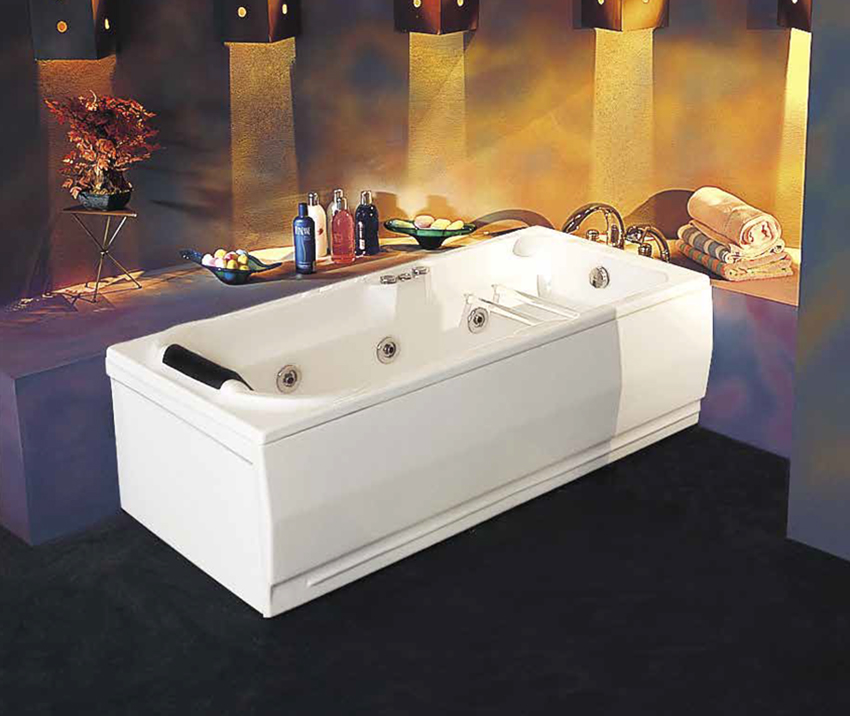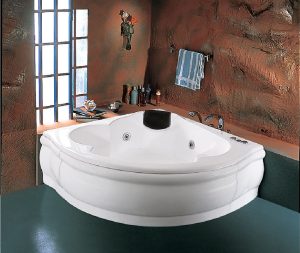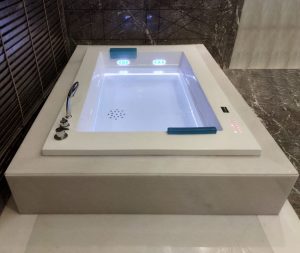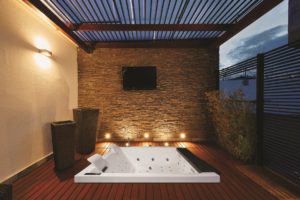The bathroom is one of the most intimate spaces in a home. When designing these personal retreats, homeowners put much thought into elements like relaxing ambiance, storage, and modern conveniences. However, the bathtub often stands as the room’s focal point and setting for our moments of respite.
Rectangular tubs offer one timeless choice that pairs seamlessly with both traditional and contemporary design aesthetics. With their clean lines, versatile sizing, and range of materials, rectangular bathtubs continue to be a popular option among homeowners and designers seeking lasting style and everyday enjoyment.
The Timeless Clean Look of Rectangular Tubs
While today’s bath trends lean modern and futuristic, the origins of rectangular bathtubs evoke images of clawfoot tubs with ornate embellishments that were the height of luxury in the late 19th century. Early built-in tubs emerged around 1915 and were most often made of cast iron coated in porcelain enamel with four lion’s paw or ball and claw feet.
Cast iron gave way to enameled steel in the 1950s, keeping the standard elongated shape but with updated details and finishes. By the 1960s and 70s, acrylic rectangular tubs offered a lighter, smoother, and warmer alternative to metal. No matter the material, the clean 90-degree angles and structured form maintain a timeless look with straightforward elegance.
Unlike curvier built-in tubs placed in alcoves, rectangular models allow versatility in size and placement so they can blend seamlessly into all types of bathrooms. Standard dimensions range from 60 to 72 inches long and 28 to 32 inches wide, with options for deeper soak depths or shallower step-in tubs. This flexibility in sizing means rectangular tubs can be short or lengthy, skinny or wide, to perfectly fit everything from snug spaces to grand master suites.
The Practical Appeal of Rectangular Tubs
Installing any new bathtub requires careful planning and skilled workmanship. Rectangular tubs simplify this process in many ways. Their classic shape slips neatly into planned alcoves with minimal unique customization required compared to curved designs. The basic tub form also pairs well with standardized surround materials like tile and enclosure products like shower doors.
Beyond ease of install, rectangular bathtubs deliver exceptional functionality. Their elongated size readily accommodates bathers seeking a good soak along with the ability to stretch out limbs. The flat interior base also provides plenty of seating space for a partner or even the kids.
Rectangular tubs give homeowners flexibility when it comes to creating their ideal bathing experience. Choose a simple soaking tub for nights of relaxation or add invigorating jets and controls for a spa-like retreat. Install showering components like adjustable heads, rails, and even benches to design a safe, accessible bathing haven.
The straight lines of rectangular tubs blend in beautifully with nearly any shower configuration including basic stall showers, neo-angle designs, or walk-in spaces tiled from wall-to-wall and floor-to-ceiling. The seamless aesthetic ensures all the shower elements dazzle without awkward gaps or tricky corners to work around.
Overall, rectangular bathtubs offer options to suit most budgets and design tastes. Materials like enameled steel and cultured marble provide durable, easy-care choices on the more affordable end while still offering style. For luxury, cast iron feels ultra-solid underfoot and acrylic looks gorgeously glossy. Contemporary rectangular tubs even come with wooden slat teak bath mats integrated into the tub floor for natural spa-like warmth.
The Modern Twist: Contemporary Rectangle Tub Options
Technology and design innovations over the last decade or so ensure today’s rectangular tubs maintain must-have status among homeowners updating their bathrooms. While retaining the essence of their enduring aesthetic, contemporary models now integrate modern materials and features for both form and function.
Makers offer fireclay rectangular soakers with subtly sloped interior walls and dual finishes to provide ergonomic support topped with luxury metallic gloss. These tubs summon a sense of old-world charm while delivering therapeutic comfort for sore muscles with their cradling shape.
Stunning stone resin rectangular tubs make a seriously bold statement with their gorgeously veined interior finish. The rich depth of color and texture resembles exotic natural stone and complements the smooth ultra-modern exterior. Though they clock in on the heavy side, these tubs promise durability and fade-resistance to maintain their eye-catching facade.
Several manufacturers now offer models in slippery shapes with rounded interior corners or subtly arched sides rather than strict boxy dimensions. This trend gives contemporary rectangular tubs added flair. Standalone designs especially take on sculpture-like aesthetics with their fluid forms perched on artfully minimalist feet.
Freestanding rectangular tubs make choosing showering fixtures and other bathroom elements so much easier, since they don’t need building into a carefully constructed alcove. This allows for airy, open designs not possible when tubs sit partially enclosed by three walls. The visual lightness of standalone tubs contrasts beautifully with stunning stone and tile finishes.
Key Design Considerations for Rectangular Tubs
The classic versatility of rectangular bathtubs does necessitate some special planning compared to built-in options. Their size and weight mean professional installation is highly recommended, but homeowners can still make the process easier by covering a few key details.
Consider the route into the bathroom when selecting a rectangular tub to ensure it can fit through any tight turns or narrow doorways. Standing drain locations also impact the flexibility of tub placement, with most models optimized for right or left drain configurations only. Shoppers should measure their existing plumbing and space carefully to choose the correctly oriented tub.
Homeowners also need to confirm floor structures can readily support a heavy bathtub, especially solid cast iron models, even when empty. Structural reinforcement near the drain assembly ensures the load disperses properly for the tub’s lifetime. Consulting building codes aids in addressing specifics like the inclusion of an access panel for servicing pipes.
Most rectangular tubs have an overflow drain hole to prevent water from reaching beyond a certain fill line and spilling over the rim if left unattended. Confirm the height of this overflow meets local regulations. Some also have slots along the front lip to accept mounting brackets for tub doors or curtains, a handy feature to check if planning to install enclosures.
Don’t overlook the value of seemingly small rectangular tub details like textured floors for slip resistance, contoured headrests for comfort, integrated armrests for ease of entry/exit and grab bars for accessibility. Considerations like an antimicrobial surface protect family health. Exploring these enhancements helps buyers invest in the details that promise everyday enjoyment.
The Timeless Tub for Today’s Bathrooms
The rectangular bathtub’s steadfast prominence through over a century of design trends attests to its versatile style and continuous evolution. Rectangular tubs not only anchor bathrooms with a classic elegance but also infuse spaces with contemporary flair through modern materials and features.
Thoughtfully designed and properly installed, rectangular tubs promise long-lasting indulgence. Their clean lines, spacious interiors, and seamless looks blend into period décor or sleek, modern rooms with equal ease. Homeowners searching for the perfect centerpiece to transform their bathroom into a personal haven need look no further than the elegantly versatile rectangular soaking tub.




